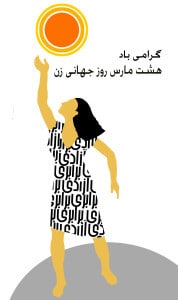International Women’s Day
International Women's Day has been observed since in the early 1900's, a time of great expansion and turbulence in the industrialized world that saw booming population growth and the rise of radical ideologies. 1908-Great unrest and critical debate was occurring amongst women. Women's oppression and inequality was spurring women to become more vocal and active in campaigning for change. Then in 1908, 15,000 women marched through New York City demanding shorter hours, better pay and voting rights. 1909-In accordance with a declaration by the Socialist Party of America, the first National Woman's Day (NWD) was observed across the United States on 28 February. Women continued to celebrate NWD on the last Sunday of February until 1913. 1910-In August, an International Women's Conference was organized to precede the general meeting of the Socialist Second International in Copenhagen. Inspired in part by the American socialists and German Socialist Luise Zietz who proposed the establishment of an annual 'International Woman's Day (singular) and was seconded by fellow socialist and later communist leader Clara Zetkin. Although no date was specified at that conference, delegates (100 women from 17 countries) agreed with the idea as a strategy to promote equal rights, including suffrage, for women. The following year, on March 19, 1911, IWD was marked for the first time, by over a million people in Austria, Denmark, Germany and 1911-Following the decision agreed at Copenhagen , International Women's Day (IWD) was honored the first time in Austria, Denmark, Germany and Switzerland on March 19th. More than one million women and men attended IWD rallies campaigning for women's rights to work, vote, be trained, to hold public office and end discrimination. However less than a week later on 25 March, the tragic 'Triangle Fire' in New York City took the lives of more than 140 working women, most of them Italian and Jewish immigrants. This disastrous event drew significant attention to working conditions and labor legislation in the United States that became a focus of subsequent International Women's Day events. 1911 also saw women's 'Bread and Roses' campaign. The United Nations General Assembly has designated November 25 as the International Day for the Elimination of Violence Against Women. The premise of the day is to raise awareness of the fact that women around the world are subject to rape, domestic violence and other forms of violence; furthermore, one of the aims of the day is to highlight that the scale and true nature of the issue is often hidden. Historically, the date is based on date of the 1960 assassination of the three Mirabal sisters, political activists in the Dominican Republic; the killings were ordered by Dominican dictator Rafael Trujillo (1930–1961). In 1981, activists marked November 25 as a day to combat and raise awareness of violence against women more broadly; on December 17, 1999, the date received its official United Nations (UN) resolution. On International Women’s Day we need to stand with all the women around the world who are fighting for their basic rights as women and as human beings along with their brothers. We understand that the world we live in is waging a war on women and children in different forms and justifications such as religious laws and practices, ethnic and cultural traditions, and economic exploitations. Women are also the first casualty of wars in forms of homelessness, malnutrition, rape, prostitution and violence. There are numerous examples of atrocities against women by both sides of warring factions in Afghanistan, Iraq, Syria, Somalia, Sudan and many other war torn countries. While women around the world are the first to rise up against discrimination and injustices be it socially, politically and economic exploitation, they are the first group to be pushed aside and subjugate to continued anti women laws, unrestrained discriminations and harsh economic exploitation. Condition of women in post 1979 Iranian revolution, Iraq after U.S occupation, Libya, Egypt and Tunisia after regime changes are few examples of unfinished struggles for peace and justice. The irony is that the experience of two U.S invasions in the region has shattered any illusions among women in the region and other social movements about the so- called 'liberation' by US-led interventions. The barbaric consequences for the women of Afghanistan and Iraq are eloquent testimony to that. Women in Iran are fully aware that they are the only force that can change their destiny and there is no such force as a “liberation” army to free them from the suffrage. While women in industrial nations have made historical progress in winning the voting rights, protection under the law, and access to more social opportunities, however our struggle is not over in both U.S and globally. In U.S, we are still faced with no equal pay for equal work, an epidemic of violence against us, lack of full reproductive rights, lack of better health care and a social safety net that ensures the adequate care of our families. Globally, we are still witnessing our sisters being faced with “honor killing”, genital mutilation, gang rapes, stoning to death for “adultery” and unfair labor practices for the interest of big multinational corporations. There are many obstacles to our complete liberation that must be cleared away both here and globally! Our journey has just started. While we have reached several mile stones within the last hundred years, our struggle and activism for the freedom and justice of women around the world continues !

